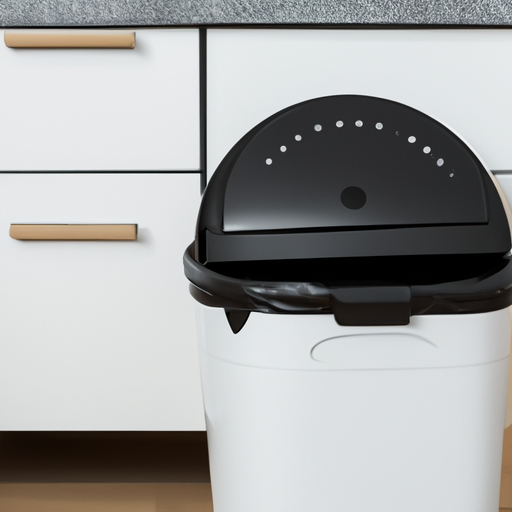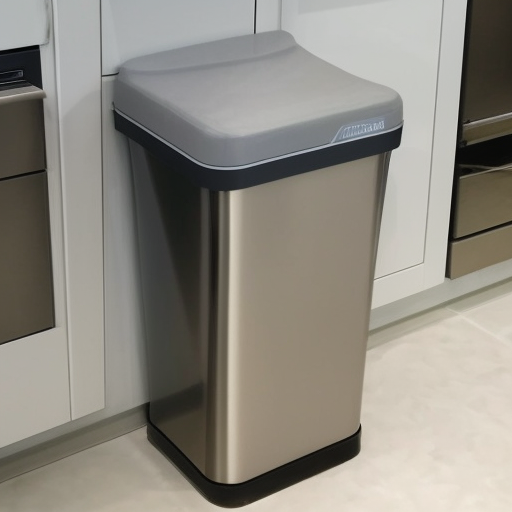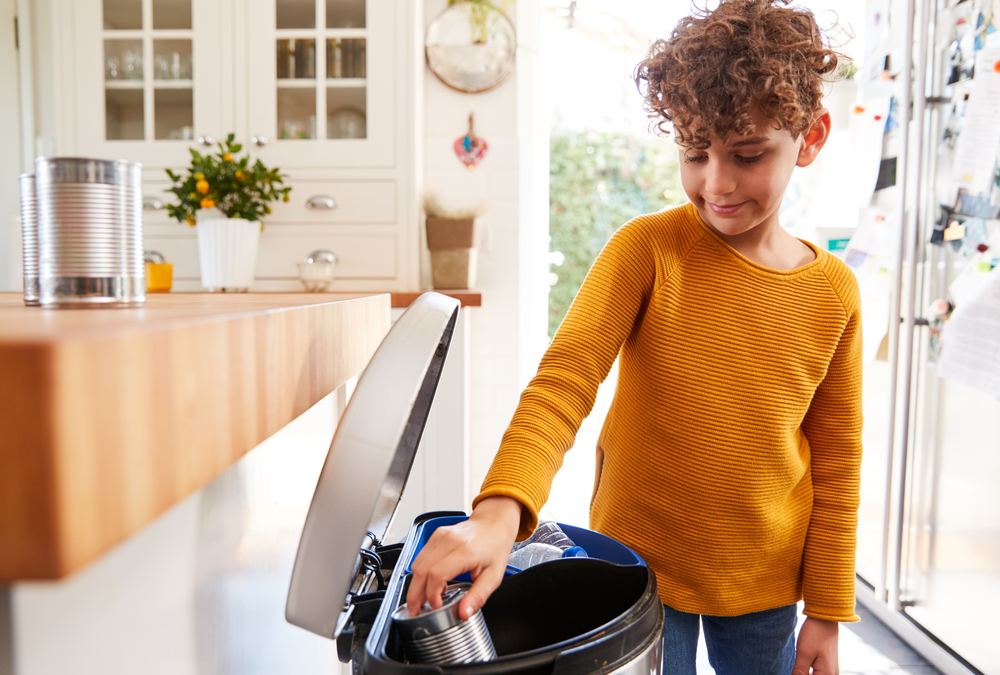Last Updated on February 6, 2023
Do you ever find yourself standing in front of your trash bin, wondering if it’s time to take out the rubbish? You’re not alone. In a world where technology is rapidly changing our lives, why should we still have to put up with mundane tasks like taking out the garbage? The answer may lie in sensor bins – but do they really work?
Sensor bins are becoming increasingly popular for their convenience and ease of use. But does a sensor bin work as promised or will you be stuck doing all the hard work anyway? Read on to learn how does a sensor bin work and what these smart waste disposal systems can offer.
Table of Contents:
- What is a Sensor Bin?
- How Does It Work?
- Benefits of Using a Sensor Bin
- Tips for Choosing the Right Sensor Bin
- FAQs in Relation to How Does a Sensor Bin Work
- Conclusion
What is a Sensor Bin?
Sensor bins are types of waste disposal bins that use sensors to detect when the lid is opened and closed. This allows them to automatically open and close, making it easier for users to throw away their rubbish without having to manually open or close the lid.
Unlike regular bins, sensor bins have an automated system that senses when you’re near it and opens the lid automatically so you don’t have to touch it with your hands. This makes them ideal for people who want a more hygienic way of disposing of their waste.
Advantages:

• Hygienic – Sensor bins reduce contact between your hands and the bin itself, which helps keep germs at bay. They also make sure that odours stay inside the bin until they can be disposed of properly.
• Convenient – With sensor bins, you don’t need to worry about opening or closing lids as they do this automatically for you. This means less time spent dealing with rubbish and more time doing other things.
• Eco-friendly – Sensor bins help reduce unnecessary waste by preventing food scraps from being thrown out prematurely due to forgetfulness or laziness; instead, these items can be recycled in an eco-friendly manner without taking up extra space in landfills or polluting our environment further.
Disadvantages:
• Expensive – Sensor bins tend to cost more than regular ones because of their advanced technology features; however, if you plan on using one regularly then this may be worth investing in as it will save time and energy over time.
• Not suitable for all types of waste – Some sensor bins may not be able to handle certain types of rubbish such as liquids or large pieces which could cause damage if put into them incorrectly; always check what type of materials are compatible before purchasing one so that there are no unexpected issues later on.
Sensor bins are a great way to keep your home and garden clean and hygienic, without having to constantly empty the bin. Now let’s look at how they work.
How Does It Work?
Sensor bins are a convenient and hygienic way to store your rubbish. They use advanced technology to detect when you’re ready to throw something away, opening the lid automatically for you so that you don’t have to touch it.
At the heart of sensor bins is an infrared (IR) sensor. This works by detecting movement in front of the bin, which triggers a signal that tells the bin’s motorised lid to open up. The IR sensors can be set at different sensitivities depending on how far away from the bin they need to detect motion – this means that if you want your bin close to a wall, it won’t open until someone stands right in front of it.
Motion detectors are also used in some models of sensor bins. These work by using radar waves or ultrasonic sound waves emitted from within the bin itself, which bounce off objects outside and return back into its receiver inside. When these waves detect motion nearby, they trigger a signal telling the motorised lid to open up again.
Finally, many modern sensor bins come with automatic lids – meaning no manual pushing or pulling is required. These types of lids usually feature two sets of sensors: one near where you place your hand and another near where your waste goes into the bin itself. When both sets are triggered simultaneously (for example when both hands go over them), then this sends a signal telling them motorised lid system to lift up automatically without any extra effort needed from yourself.
By understanding the basics of how a sensor bin works, you can begin to appreciate the benefits of using one in your home or garden.
Benefits of Using a Sensor Bin
Sensor bins are becoming increasingly popular in the UK as a convenient and hygienic way to dispose of household waste. These bins feature motion sensors that open the lid automatically when someone approaches, allowing for hands-free operation. This helps reduce odours from lingering around your home or garden, as well as keeping germs at bay by preventing contact with the bin itself.
Another benefit of using a sensor bin is its space-saving design. Many models come with an integrated compactor that reduces waste volume by up to 80%, meaning you can fit more into each bag before needing to empty it out. Additionally, some sensor bins also have built-in deodorizers which help keep any unpleasant smells away while still ensuring that all your rubbish is disposed of properly and quickly.
Finally, many modern sensor bins now come with additional features such as voice commands and Wi-Fi connectivity so they can be controlled remotely via smartphone apps or even voice assistants like Alexa or Google Home – perfect if you’re too busy multitasking elsewhere in the house.
Using a sensor bin can help reduce the amount of time spent on manual waste management, as well as helping to keep your home hygienic and odour-free. With that in mind, let’s take a look at some tips for choosing the right sensor bin for you.
Tips for Choosing the Right Sensor Bin
Sensor bins are a great way to keep your home or garden clean and tidy. They’re an efficient, hygienic solution for disposing of rubbish without having to manually open the bin lid each time. But with so many different models on the market, how do you choose the right one? Here are some tips to help you make an informed decision:
Size: The size of sensor bin you need will depend on where it is going and how much waste it needs to hold. If you have a small kitchen or bathroom then a compact model may be best suited. For larger spaces such as offices or outdoor areas, opt for something bigger that can accommodate more waste.

Capacity: Sensor bins come in various capacities ranging from 3 litres up to 50 litres – depending on your requirements this could determine which model is best for you. Consider how often it will need emptying; if used frequently then opt for a higher capacity option as this will save time and effort in the long run.
Features: Many sensor bins now come with additional features such as odour filters, removable inner buckets and adjustable lids – all designed to make life easier when disposing of rubbish. Think about what features would be beneficial for your needs before making a purchase – these extras can really add value and convenience when using your bin day-to-day.
Price: As with any product there is always room within budgets but don’t let price be the only factor when deciding which model is right for you – consider quality too. Cheaper options may not last as long due to lower-grade materials being used so think carefully before committing – after all, no one wants their money going down the drain (literally.).
By following these simple tips, selecting the perfect sensor bin should become much easier. With so many models available today there is sure to be something out there that meets both your budget and lifestyle requirements. Happy shopping.
FAQs in Relation to How Does a Sensor Bin Work
Why is my sensor bin not working?
There are a few possible reasons why your sensor bin is not working. Firstly, check that the power source is connected and switched on. Secondly, make sure the lid of the bin is completely closed when in use as this can interfere with the sensors. Lastly, check for any blockages or debris around the sensors which may be preventing them from functioning correctly. If none of these solutions resolve your issue then it may be time to contact customer service for further assistance.
Do sensor bins close themselves?
Sensor bins vary in their features and capabilities. Some sensor bins do have the ability to close themselves automatically when they detect motion or after a certain amount of time has passed. However, not all sensor bins are equipped with this feature, so it is important to check the product specifications before purchasing one. It is also worth noting that some models may require batteries for the self-closing mechanism to work properly.
Conclusion
Knowing how does a sensor bin work will surely make you home and kitchen activities more easy and efficient. They work by automatically opening when you approach them, making it easier for you to throw away waste without having to touch the bin lid. The benefits of using a sensor bin include improved hygiene, convenience and less mess in your home or garden. When choosing the right one for your needs, consider factors such as size, material and design features that best suit your lifestyle. So if you’re looking for an easy way to keep things clean around the house – does a sensor bin work? Absolutely!
Paul is the type of person who never met a problem he couldn’t fix. He can always be found tinkering with something in his house, even if it isn’t broken! His tips and tricks are often shared on our site. He’s the one you call when something breaks because he has been known to improvise fixes for everything from leaky faucets to malfunctioning dryers.

